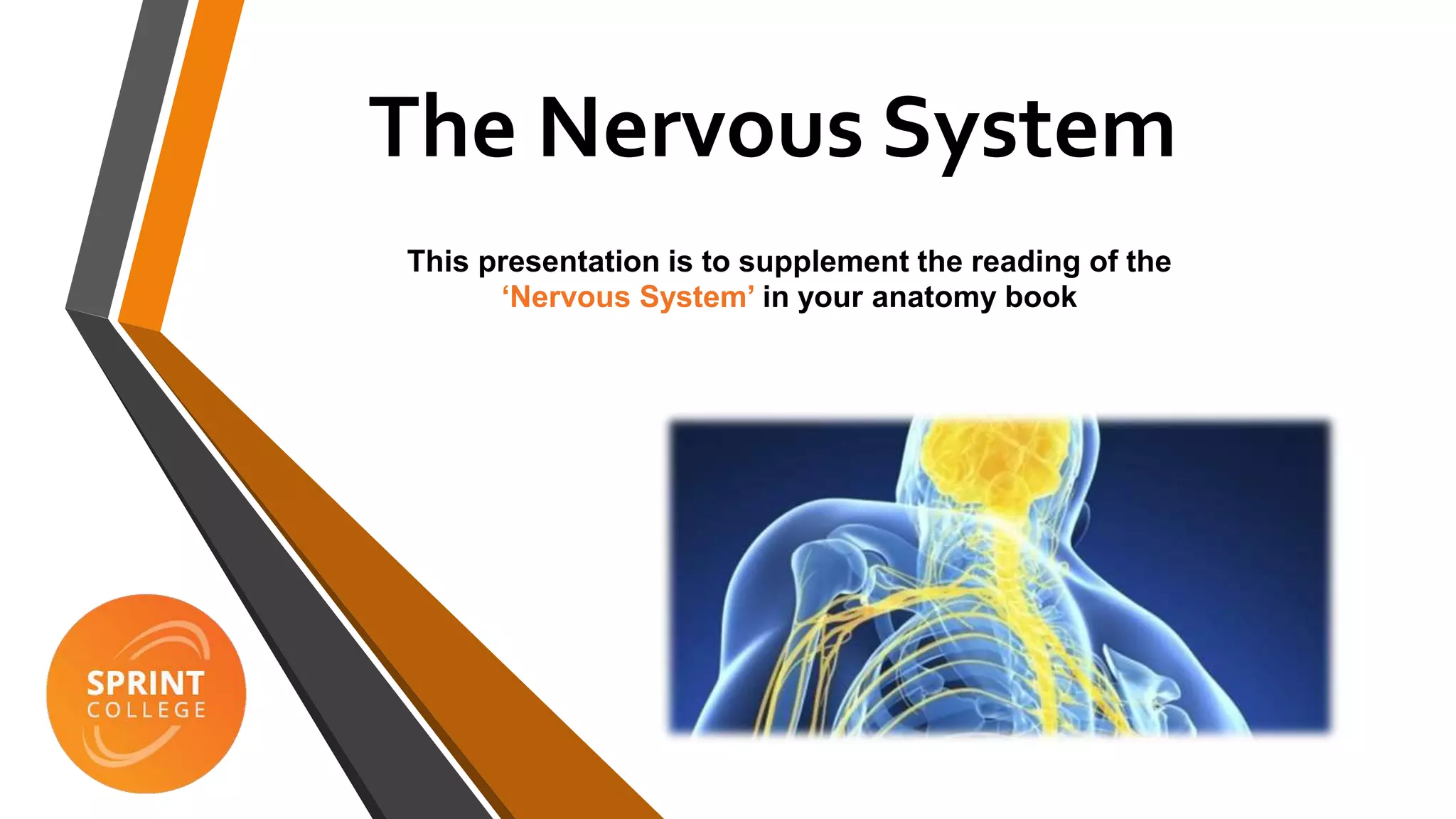The nervous system consists of the central nervous system (brain and spinal cord) and peripheral nervous system. The main function of the nervous system is to control and coordinate functions throughout the body and respond to internal and external stimuli via neurons which carry electrical signals. Neurons connect and communicate with each other via synapses using chemical messengers called neurotransmitters. The nervous system allows for voluntary and involuntary movement, processing of the senses, and regulates organ functions.



















